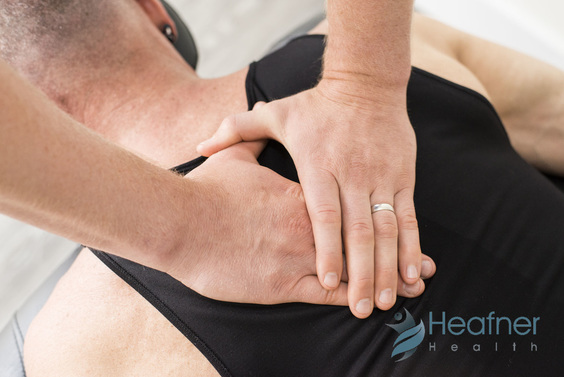|
Did you know that 60-80% of individuals will suffer from low back pain at some point in their lives? America alone spends more than $50 billion each year studying low back pain. A missing link exists in the treatment of neck and low back pain. The solution literally (and figuratively) connects these two regions - improving thoracic spine stiffness. The thoracic spine - or middle twelve vertebrae of the spine - connect the neck to the low back. Anatomically this region moves less than its counterparts. The neck is designed for high amounts of movement in order to quickly look or turn. On the contrary the thoracic spine is built for stability. It houses the connections for the ribs, which protect the vitally important organs of the heart and lungs. While some stiffness is accepted, problems arise when this region loses motion. A lack of motion forces the higher and lower connections (neck and low back) to move excessively. The excessive movement causes small amounts of repetitive trauma in the neck and low back eventually resulting in pain. Part of the solution to resolving neck and low back pain is performing regular thoracic spine mobility exercises. Desk work, driving, and other sedentary habits prohibit our natural posture. Combat these forces by performing a daily thoracic mobility routine. Thoracic Mobility Routine
2 Comments
Manuel Franco
8/29/2023 10:40:16 pm
I just want to say Thank You to everyone who supported me through the years. My name is Manuel Franco, New Berlin, Wisconsin. My story of how I won the Powerball lottery of $768.4M is a bit of a tale. I have been playing Powerball tickets for 6 years now since I turned 18. I bought my first ticket on my 18 birthday. I was feeling very lucky that day because I had contacted Dr. Odunga Michael to help me with the winning Powerball numbers. I really had that great great feeling that I looked at the camera wanting to wink at it. I only did a tiny part of it and trusted him. He gave me the numbers after I played a couple other tickets along with it for $10. I checked my ticket after the winnings came online and saw the numbers were correct including the Power play. I screamed for about 10 minutes because it felt like a dream. I had won $768.4M. You can check my winning testimony with the lottery officials just with my name search. Thank you Dr Odunga. Well, his email is [email protected] and you can also call or Whats-app him at +2348167159012 so you guys can contact him
Reply
Hailey Garcia
6/20/2024 11:03:38 pm
My name is Hailey Garcia and I am from New Jersey. My herpes virus turned to war after 2 years of living with it. I have tried different medical procedures to cure my herpes but to no avail. Most people think herpes is only a minor skin irritation of which herpes has long term effects on health and passes through the bloodstream and can be easily contracted through sexual intercourse. I knew I had herpes from the first day I started feeling itchy in my pubic area and the pain was very unbearable. I couldn't stand it anymore. After 2 years of trying other means to get rid of it, I had to contact Doctor Odunga to help me with a permanent cure. I saw his email and whats-app number from a testimony I read online from a lady who was also helped by him in curing infertility problems, I had faith and contacted him. He assured me of his work and I ordered his herbal medicine. Within 5 days, I didn't feel any pain anymore and within 2 weeks, my skin was all cleared and smooth. I am very grateful to you sir and I write this testimony as others have done to bring those having faith to you sir. If you have herpes or other similar disease and you want it cured, kindly contact Doctor Odunga, Whats-App (wa.me/+2348167159012) OR Email [email protected]
Reply
Leave a Reply. |
Heafner HealthPhysical Therapy Archives
April 2024
Categories |


 RSS Feed
RSS Feed
